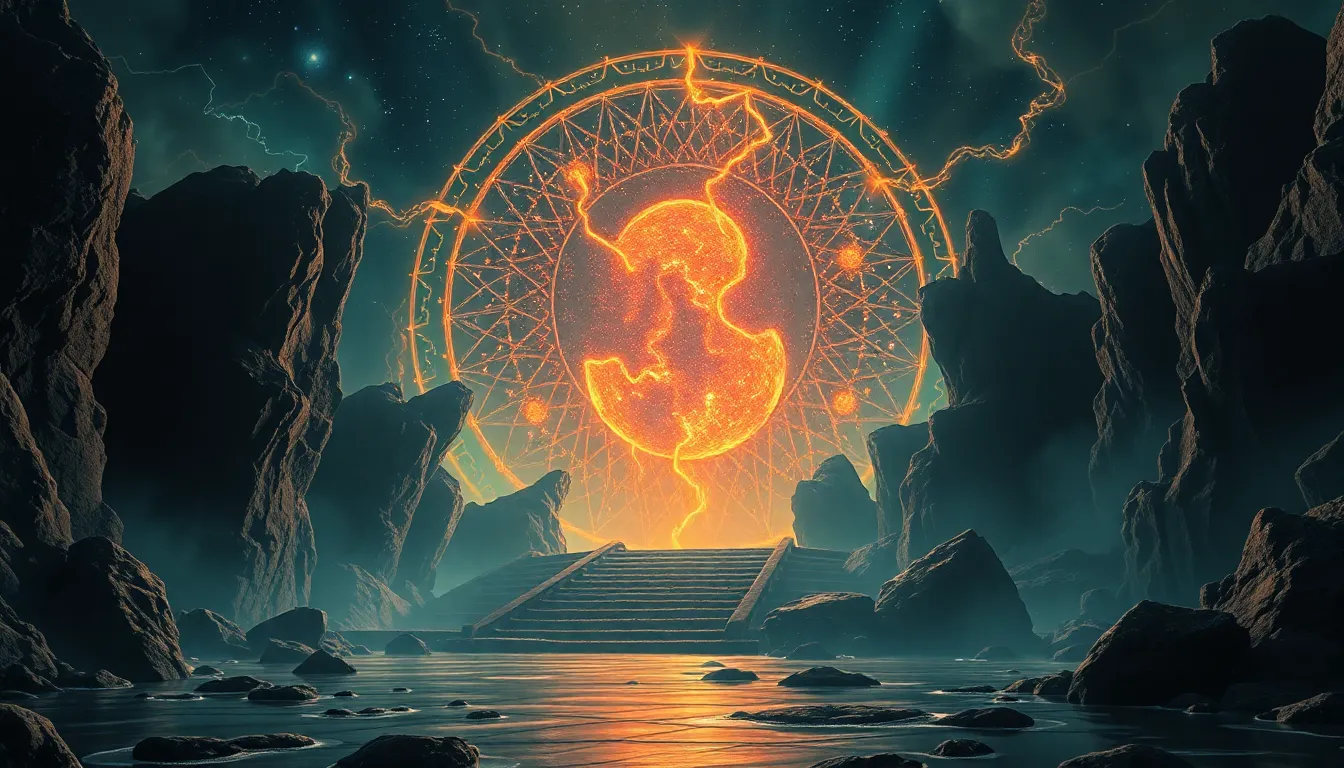Yggdrasil’s Influence: The World Tree’s Impact on Global Mythology
I. Introduction
Yggdrasil, often referred to as the World Tree, is a monumental symbol in Norse mythology representing the interconnectivity of all realms of existence. This immense ash tree is not only a centerpiece of Norse cosmology but also embodies various themes such as life, death, and the cyclical nature of existence. Beyond Norse mythology, the concept of a world tree appears in diverse cultures worldwide, each with its unique interpretations and significance. This article aims to explore Yggdrasil’s characteristics, its role in mythology, and its influence across different cultures, literature, and modern spiritual practices.
II. The Concept of the World Tree in Norse Mythology
Yggdrasil is depicted as a colossal ash tree whose branches extend into the heavens, while its roots delve deep into the underworld. This tree is not merely a physical entity; it represents the axis mundi, the central point connecting various realms.
Characteristics and Symbolism:
- Immensity: Yggdrasil is described as being so large that it is home to various beings, including gods, giants, and mythical creatures.
- Symbol of Life: Its life-giving properties are emblematic of creation and fertility.
- Cycle of Existence: Yggdrasil reflects the cyclical nature of life, encompassing birth, death, and rebirth.
Connecting the Nine Realms: Yggdrasil serves as a bridge linking the nine realms of existence in Norse cosmology, including Asgard (the realm of the gods), Midgard (the realm of humans), and Hel (the realm of the dead). This connection emphasizes the interdependence of all realms and beings.
Inhabitants and Surrounding Beings: Numerous creatures reside within and around Yggdrasil, such as:
- Huginn and Muninn: The two ravens of Odin who symbolize thought and memory.
- Nidhogg: A serpent that gnaws at the roots of Yggdrasil, representing decay and destruction.
- The Norns: Female beings who weave the fates of gods and men, tending to the tree’s well-being.
III. Comparative Analysis of World Trees in Different Mythologies
The concept of a world tree appears in various mythologies, each representing similar themes of connection and existence.
- The Tree of Life in Mesopotamian Mythology: Known as the “sacred tree,” it symbolizes immortality and divine protection, often associated with the goddess Inanna.
- The Bodhi Tree in Buddhism: This tree is where Siddhartha Gautama attained enlightenment. It symbolizes wisdom, understanding, and the path to liberation from the cycle of rebirth.
- The World Tree in Mesoamerican Cultures: In these cultures, particularly among the Maya and Aztecs, the Ceiba tree serves as a world tree that connects the underworld, earth, and heavens, symbolizing the unity of all life.
IV. Common Themes and Motifs Associated with World Trees
World trees often embody universal themes that resonate across different cultures:
- Life, Death, and Rebirth: World trees typically symbolize the cycle of life, emphasizing the transient nature of existence.
- Connection of Realms: They represent the link between the celestial (heaven) and terrestrial (earth) realms, bridging the gap between different states of existence.
- Knowledge and Wisdom: Many world trees are associated with the pursuit of knowledge, serving as a source of divine wisdom for those who seek it.
V. Yggdrasil’s Influence on Literature and Popular Culture
Yggdrasil has profoundly influenced various aspects of literature and popular culture throughout history.
References in Classical Literature: Yggdrasil appears in texts such as the Poetic Edda and the Prose Edda, where it is revered as a sacred entity.
Modern Adaptations: Contemporary literature, films, and video games have drawn inspiration from Yggdrasil, portraying it as a symbol of connectivity and the struggle between good and evil. Examples include:
- Books: “American Gods” by Neil Gaiman features Yggdrasil as part of its exploration of mythology.
- Films: Movies like “Thor” incorporate Yggdrasil into their narratives, showcasing its significance in Norse mythology.
- Video Games: Titles like “God of War” and “Final Fantasy” reference Yggdrasil, using its symbolism to enhance gameplay and storytelling.
Contemporary Interpretations: Yggdrasil’s symbolism continues to be reinterpreted in modern narratives, often reflecting contemporary themes of interconnectedness and environmental awareness.
VI. Theological and Philosophical Implications of World Trees
The spiritual significance of Yggdrasil and other world trees invites profound theological and philosophical exploration.
Spiritual Beliefs: Yggdrasil is seen as a living entity that embodies the universe’s interconnectedness, fostering a sense of unity among all living beings.
Interconnectedness of Life: The concept of the world tree emphasizes that all life forms are interconnected, promoting a holistic view of existence.
Impact on Environmentalism: These ideas encourage a greater appreciation for nature and have inspired movements advocating for environmental sustainability and ecological balance.
VII. Yggdrasil in Modern Pagan and Neo-Pagan Practices
The revival of interest in Norse mythology has led to the incorporation of Yggdrasil into contemporary spiritual practices.
Contemporary Spirituality: Modern Pagan and Neo-Pagan practitioners often honor Yggdrasil in rituals, viewing it as a symbol of life and connection.
Rituals and Ceremonies: Celebrations may include:
- Seasonal festivals honoring the cycles of nature.
- Rituals invoking the wisdom of Yggdrasil for guidance and protection.
Modern Interpretations: Yggdrasil serves as a powerful symbol of resilience and growth in modern interpretations of mythology, reflecting the enduring legacy of ancient beliefs.
VIII. Conclusion
Yggdrasil’s influence resonates across various cultures, illustrating the universal importance of the world tree concept in understanding existence. From Norse mythology to modern literature and spiritual practices, Yggdrasil embodies themes of life, interconnectedness, and wisdom. Its enduring legacy serves as a reminder of the profound connections that bind all forms of life and the importance of cultural mythology in navigating the human experience.




